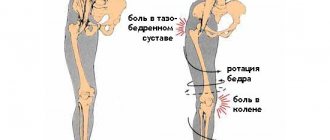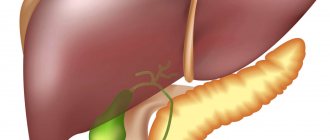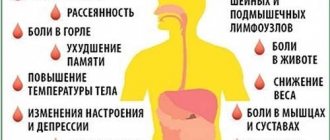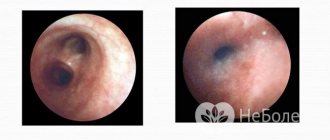Anna Alexandrova, somnologist, neurologist, 9 years of experience, highest category
Snoring is not always a serious problem; sometimes it is an acceptable disruption in the body. But if it is severe snoring, then it is better to consult a doctor immediately. The reasons are always almost the same. Most often it’s excess weight, less often it’s physiological features, and even less often it’s problems with the nasopharynx and hormonal imbalances.
Snoring in one person can be a completely harmless phenomenon, while in another it can be a symptom of serious disorders in the body, as well as a harbinger of other pathologies. Therefore, today experts in the field of snoring, somnologists, recommend that all people who periodically or constantly suffer from night snoring undergo an examination. Especially if, in addition to this, breathing stops during sleep.
Sleep apnea is the medical term for a person's breathing that stops during sleep, often accompanied by snoring. Regardless of the frequency of such stops and their duration, all this leads to oxygen deficiency and disruption of the functioning of internal organs and systems. To protect yourself from such consequences, sleep apnea and snoring should be examined by specialists and also treated with an adequate course of therapy.
Determinants and signs of the disease
The reasons why a patient stops breathing during sleep can be grouped into two large functional groups:
- Air has difficulty passing through the respiratory tract. This occurs against the background of allergic reactions, the presence of polyps in the nasal cavity, congenital structural features of the pharynx or lower jaw, and a large amount of fatty deposits in the neck.
- The muscles of the pharynx have reduced tone. This problem manifests itself against the background of alcohol abuse, taking sedative medications, hypothyroidism, and neurological disorders.
What are the risk factors for developing the disease:
- gender (in men this pathology is much more common);
- age characteristics - symptoms of apnea most often appear in people between 40 and 60 years of age;
- ethnicity and race;
- hereditary factor;
- presence of excess body weight;
- bad habits.
The clinical picture of obstructive sleep apnea is described by the following symptoms:
- during the day a person experiences drowsiness, weakness, lethargy;
- during night sleep the patient often wakes up (for unknown reasons);
- You may have a headache in the morning;
- often obstructive apnea syndrome is accompanied by attacks of high blood pressure, while its indicators normalize over time without taking special medications;
- a person sweats in his sleep;
- nocturnal increased heart rate;
- infertility, decreased sexual function in men;
- excess body weight and problems with losing weight;
- heart attacks, strokes and other serious pathologies of the cardiovascular system.
All these signs of sleep apnea are associated with the fact that the human body does not receive enough oxygen necessary for normal functioning. Accordingly, over time, obstructive apnea syndrome certainly leads to various hormonal disorders and dysfunctions of the cardiovascular system.
Conclusion
Sleep apnea is common in adults. Many factors contribute to this.
Usually a specialist has no problems making the correct diagnosis. You should not ignore the symptoms of apnea and diagnose yourself. The doctor will help determine the cause of the pathology and prescribe the correct treatment. Remember: sleep apnea can be a signal from the body that there are serious problems!
- Newborn baby sleeps poorly and cries
- A child snores in his sleep: causes of snoring at night in infants and newborns, treatment, differences from snoring, why snores after adenoid removal
How to identify the disease
It is clear that treatment of sleep apnea begins with its diagnosis. The main technique that helps identify this syndrome is to study the patient’s night breathing in order to determine the intensity of the air flow entering the patient’s lungs, the nature of sound vibrations during sleep (snoring), as well as the level of oxygen in the blood.
To diagnose obstructive apnea, several effective methods are used:
- polysomnography;
- respiratory monitoring;
- to adequately assess the functioning of the lungs, use radiography and special functional tests;
- laboratory blood tests (general analysis, sugar content, thyroid hormones, lipid complex).
Once the diagnosis of obstructive apnea syndrome has been confirmed in the patient, treatment for the disease can begin. Read more about how sleep apnea is treated.
Symptoms
At the initial stage, a person does not experience pronounced symptoms, and short-term attacks do not affect his quality of life. The first sign of sleep apnea syndrome is severe snoring, which is reported to the patient by family members. Over time, the following general symptoms appear:
- constant fatigue (it occurs due to chronic lack of sleep);
- headache;
- irritability and depression;
- rapid physical fatigue;
- decreased concentration and memory;
- violation of potency;
- feeling of heaviness in the chest;
- heart rhythm disturbance;
- drowsiness.
Children show the following signs of the disease:
- snore,
- sleeping in strange positions,
- enuresis,
- increased sweating during sleep.
Preventive actions
To avoid the appearance and development of pathology, you should familiarize yourself with the main factors that provoke the disease and promptly neutralize their pathogenic effect:
- It is necessary to promptly diagnose and treat any somatic diseases (heart and pulmonary pathologies, inflammatory processes in the nasopharynx, thyroid dysfunction).
- It is recommended to carefully monitor body weight - obesity leads to excessive accumulation of deposits in the cervical area, as a result of which the respiratory lumen is reduced - a person begins to snore in his sleep, and he develops obstructive apnea syndrome.
- You should definitely fight bad habits and avoid stressful situations if possible.
- You need to regularly perform aerobic exercises - in particular, cycling, race walking, running, and swimming show good results.
Ways to combat the disease
Stopping night breathing should only be treated by a specialist - a somnologist. Therapy for a disease involves direct action on the cause of its occurrence.
They begin to treat the syndrome by correcting the patient’s usual lifestyle:
- the patient must completely abandon all bad habits, reduce the amount of alcohol consumed and quit smoking;
- the patient is recommended to follow a strict diet that excludes very fatty and so-called “slimy” foods (cheeses, some types of meat, fermented milk mixtures) from the daily diet;
- if you are overweight, lose weight (for treatment of obstructive sleep apnea to be effective, the patient must lose at least ten percent of his original weight);
- positional therapy (if the syndrome is associated with the fact that the patient sleeps exclusively on his back, he should adjust his habits - sleeping in the “side” position is preferable).
- It is very important that before starting treatment the patient completely stops taking any tranquilizers or other sedative medications.
The above recommendations can help cope with sleep apnea in the early stages of the disease or be combined with other methods of treating the disease.
Short description
With apnea, the chest freezes and a temporary cessation of breathing occurs, lasting from 10 seconds to several minutes. As the disease progresses, attacks become more frequent and longer lasting. In advanced cases, breath holding accounts for 60% of the total time allotted for sleep.
Most often, sleep apnea syndrome occurs in middle-aged and older men. But women and even small children are not immune from the development of this disease. The presence of concomitant diseases in a person, such as bronchial asthma and hypertension, significantly aggravates attacks of sleep apnea.
Drug therapy
Unfortunately, treatment of obstructive sleep apnea with medications is practically ineffective. In principle, there are no tablets that could prevent night breathing from stopping. Even numerous pharmaceutical or folk compositions that relieve swelling and strengthen the mucous membrane do not lead to the desired result.
The ineffectiveness of drug therapy is associated with several reasons:
- obstructive apnea syndrome is a pathology that is associated with adhesion of the respiratory lumen - it is not possible to solve this problem with the use of drugs;
- in addition, numerous drugs positioned by developers as those that will cure sleep apnea can only aggravate the clinical picture of the disease (cause swelling or provoke an acute allergic reaction).
Devices and accessories
A good clinical effect in the fight against the disease is demonstrated by the so-called “mouthguards” - these are effective intraoral devices, the function of which is to change the position of the patient’s lower jaw during sleep (it moves forward and is securely fixed). Thus, the respiratory lumen increases, and the tissues do not come into contact with each other. This method is in great demand in Moscow and other cities due to its high efficiency and accessibility. Another innovative device that helps cope with the symptoms of sleep apnea is the Anti-Snoring magnetic clip. The device facilitates breathing, combats snoring and prevents the patient from involuntary pauses in breathing.
PAP therapy is one of the most well-known techniques used in the treatment of sleep apnea. The technology is based on a mechanism for continuously supplying air into the patient’s respiratory tract - this process prevents the walls of the pharynx from touching each other, and the patient breathes normally throughout the night.
The device used to perform PAP therapy in Moscow is capable of functioning in completely different modes, which are selected depending on the severity of the pathology and the nature of sleep-disordered breathing.
The clinical effect of this treatment is as follows:
- respiratory arrests stop after the first therapeutic session;
- snoring disappears;
- Symptoms accompanying apnea syndrome, such as weakness and drowsiness during the day, disappear.
It is important that the level of effectiveness of PAP therapy can reach one hundred percent result, regardless of what factor provoked the appearance and development of the pathology. The patient is treated at home under the supervision of a somnologist.
Diagnosis of apnea
The diagnosis is based on the patient's complaints and examination data. But since the symptoms are not typical and may not appear at all, additional diagnostics are required. Many people wonder which doctor to see. The first step is to contact a therapist or take your child to a pediatrician. If the problem is serious, you will need to contact a somnologist. Experts are more likely to use polysomnography.
With apnea, diagnosis is carried out very carefully. Polysomnography is a long procedure that takes approximately 8 hours. Using special instruments, doctors examine the patient's sleep throughout the night. This method consists of recording vital signs such as respiratory arrest, brain waves, and their duration. Based on the results, a final diagnosis is already made.
Surgery
This treatment method is used to treat sleep apnea. To eliminate the syndrome, doctors increase the respiratory lumen, thus freeing up a path for air flow that is directed into the lungs.
Also, depending on the cause of sleep apnea, the surgeon may remove tonsils, excise polyps in the nasal passages, and correct certain anatomical abnormalities (for example, correcting the shape of the nasal septum).
Nocturnal cessation of breathing, called obstructive apnea syndrome, is a serious pathology that can lead to serious health problems for the patient. Timely detection and correct conservative or surgical treatment of the disease will help avoid its undesirable consequences.
The author of the article is Kukhtina M.V.












